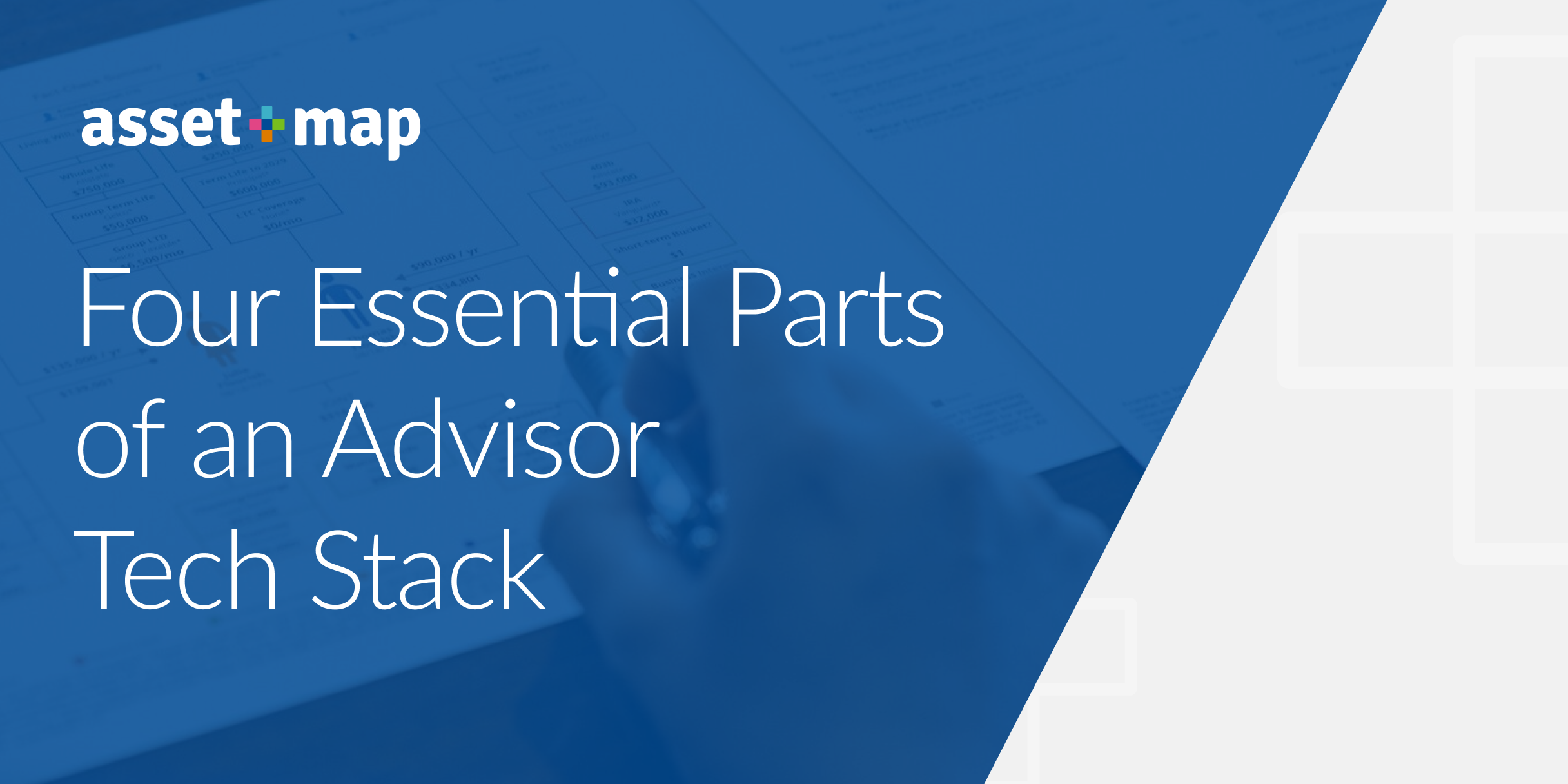The Four Essential Parts of an Advisor Tech Stack
By Matt LaBenz, Senior Account Manager, Emerging Enterprise Solutions
There is a lot of technology available for advisors today—and it seems to be growing every single month.
If you take a look at the Fintech map that Michael Kitces regularly compiles for the wealth management industry (or the recently created Advisor Tech Compass), it’s easy to wonder how anyone can make a decision about what technology to add.
Much of the technology available can certainly be helpful, but most RIAs don’t need an overwhelming amount of tech. They do, however, need to know which core pieces are necessary for almost every advisory firm.
You’re likely aware of what is often referred to as the Big Three of advisor technology: CRM, Financial Planning, and Portfolio Management.
But did you know that there’s a fourth piece of the core technology stack? In fact, the fourth piece is the one that is most important because it touches all other pieces of your tech stack - a Client Engagement Solution.
Here’s why it’s so important.
Why Client Engagement Technology is Necessary
A client engagement tool can do many things to elevate your firm’s service, from the first time you interact with someone to the hundredth time you meet.
This piece of the technology stack adds consistency to your routines by giving you a single tool to frame all client conversations around.
It also helps your clients better understand what to expect during their regular meetings, which speeds up your planning and preparation process as well by removing the need to come up with a new format and topic for each time you meet.
In times of uncertainty, it can be tremendously important to provide clients with a routine and consistent expectations to help them manage their emotions and keep their financial knowledge at a consistent level.
A client engagement tool can help you do that.
How Asset-Map Fills the Core Technology Gap
Does your firm have that single piece of technology you can use to start the conversation and collect prospect information, and then continue to use as the center of client conversations going forward?
Some advisors try to use an IPS or risk tolerance questionnaire to begin relationships, but those are not true client engagement tools. They simply identify risk associated with investment accounts.
Traditional financial planning tools are often built for advisors first and are too complex and detailed to be used in client meetings.
What advisors need is a core piece of the tech stack that makes complex ideas simple to communicate. And that’s where Asset-Map comes in.
Asset-Map’s visual planning solution provides a way to guide every single client interaction that happens inside an advisory firm, from prospect to long-term client.
Beginning with the Discovery tool, prospects can build out the details of their financial life. Once you begin meeting more often, the Asset-Map acts as the centerpiece of client conversations by laying out their entire financial lives on a singular, digital visualization.
It makes it simple to identify what a client has, what they’re missing, and how the various assets they own are working together to help get them closer to their goals.
How Asset-Map Connects the Core Technology Stack
Asset-Map is not only the centerpiece of client conversations, it also acts as the centerpiece of your core technology stack.
Firms who use in-depth financial planning tools find that they often only deploy them for 20% of their clients because most clients simply don’t require such detailed planning work.
By beginning conversations around the Asset-Map, advisors can easily provide an initial plan for all of their clients and then better identify the few clients that require more detailed planning work.
Asset-Map’s integrations with CRMs and portfolio management platforms mean that advisors can pull in all of a client’s information onto a single sheet. You can review insurance policies, businesses, and trust information that might be found on a CRM, while also looking at updated balances of a client’s investment accounts stored in your portfolio management system.
Asset-Map brings all the information you store in systems that you wouldn't normally put in front of a client, and pulls it together into a single, cohesive conversation.
In today’s heavily-regulated environment, which requires that clients receive information that proves you’ve reviewed their options and make recommendations in their best interest, the peace of mind you can reach when centering conversations around Asset-Map can’t be overstated.
At the end of the day, being a financial professional is all about putting clients first. The best way to ensure you always do that is to prioritize client engagement in your tech stack, so you can be sure that you’re having productive conversations that give them the information they need to make sound decisions.
See how Asset-Map can be the centerpiece of your client conversations. Click here to schedule a personal demo.

